2021-2022 | 2019-2020 | 2017-2018 | 2015-2016 | 2013-2014 | 2011-2012 | 2009-2012 | 2007-2008
The winner of the 2021-2022 Malott Prize for Recording Community Activism is The Water Defenders: How Ordinary People Saved a Country from Corporate Greed, by Robin Broad and John Cavanagh, Beacon Press (Boston), 2021.

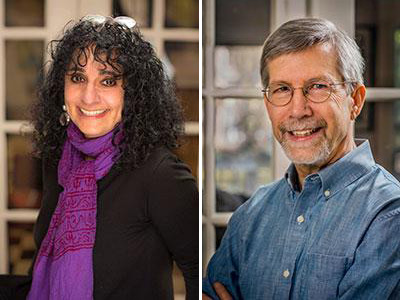
Robin Broad and John Cavanagh describe the courageous work of activists protecting their communities in northern El Salvador. Their activism transcended the boundaries of their small, densely populated nation, bringing in groups from around the world, but they remained devoted, above all else, to preserving their community in the face of exploitation by vast corporate and banking interests. The Water Defenders is a tale of community organizing in the globalized Twenty-First Century. It is told with passion and sophistication by its authors, and stands as a tribute to the bravery of local and global activists who worked to preserve the resources—both natural and human—of communities in El Salvador. In doing so, the authors prove to be richly deserving of the Malott Prize for Recording Community Activism. – F.S.
– – – – –
The finalist of the 2021-2022 Malott Prize for Recording Community Activism is Paradise Falls: The True Story of an Environmental Catastrophe, by Keith O’Brien, Pantheon Books (New York), 2022.
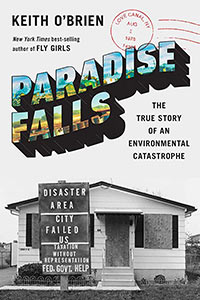
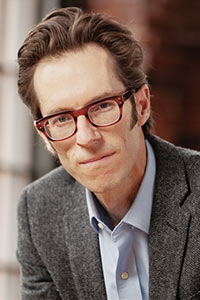
Keith O’Brien provides a vivid account of community activism in the infamous case that has come to be known as “Love Canal.” In Paradise Falls, he combines a novelistic narrative with a reporter’s eye to detail, to bring out the drama of a community besieged by environmental catastrophe, and their desperate, and ultimately heroic, efforts to hold corporations and governments accountable. His account seamlessly links their fight to larger political developments, but it never loses sight of the aspirations of people living in the community of Niagara Falls, NY, and their fight for justice. – F.S.
The winner of the 2019-2020 Malott Price for Recording Community Activism is This is Ohio: The Overdose Crisis and the Front Lines of a New America, by Jack Shuler (Counterpoint, 2020)
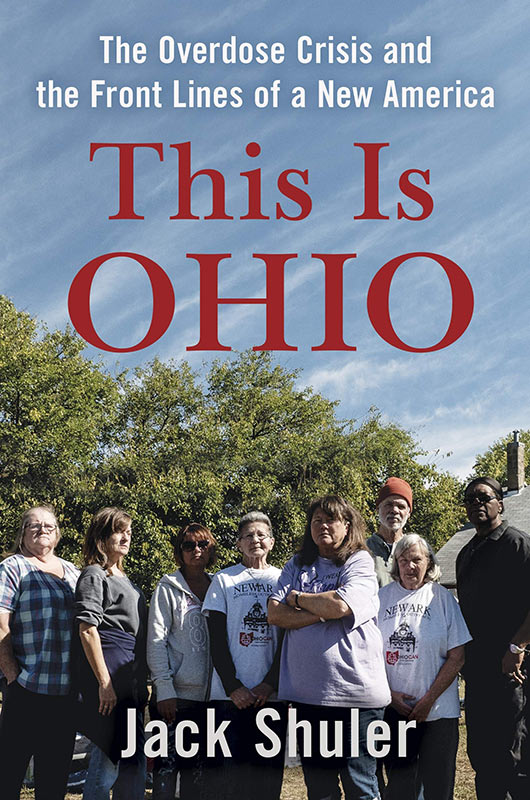

Jack Shuler demonstrates with compelling clarity that, when the drug-addicted and downtrodden join together to fight for themselves, they can overcome societal scorn, win some battles and gain dignity and humanity in the face of hostile courts and an economy that offers few viable options. Through the story of resistance and struggle in the small Ohio town of Newark, typical of many places in the US today, Shuler shows how shut-down factories, crumbling infrastructure, job loss and unresponsive government – not moral failure – lead to hopelessness and addiction. More importantly, he demonstrates that the solution lies with the organization and drive of those most affected. Not every battle is won and not every addict is saved. It is a steep climb back from impoverishment and drug dependence but only a fight led by those who are there and have been there offers real hope because only they can persuade other victims that they were not bound to lose and that they could be good to others and good for something. – D.G.
– – – – –
The finalist status for the 2019-2020 Malott Prize in Recording Community Activism is Beyond the Usual Beating: The Jon Burge Police Torture Scandal and Social Movements for Police Accountability in Chicago, by Andrew S. Baer (University of Chicago Press, 2020)
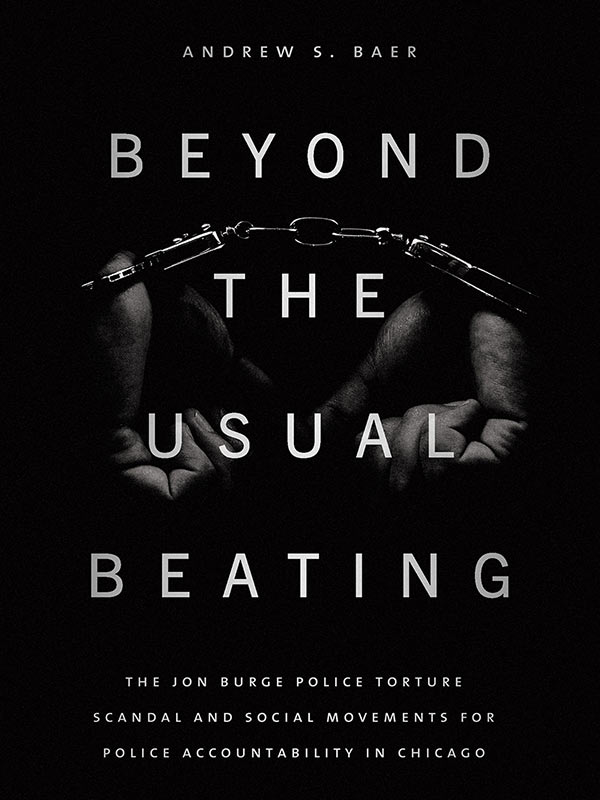

Andrew Baer’s book could not be more timely in bringing to light the recent history of police brutality in a large midwestern city. The book focuses on what can only be called a systematic policy of torture under the leadership of police commander Jon Burge (with the explicit or implicit support of numerous Chicago mayors). It is also timely in describing the coordinated grass-roots efforts to address this injustice and push for systematic reform. Its focus on an era that followed the national civil rights movement, and on an especially vivid case of police misbehavior, makes the book an especially valuable contribution to our understanding of racial politics in the United States. What makes it even more significant is its careful analysis of a successful campaign, on the streets and in the halls of power, to eventually hold perpetrators accountable and change police behavior.
Baer brings a scholar’s approach to this dramatic and pressing topic. He places the ability of a police chief to operate with impunity in the larger historical and political context of the backlash against the assertion of African-American rights in the 1960s and 1970s. He correctly emphasizes the deindustrialization that gutted many of Chicago’s neighborhoods. Baer brings a similarly deep analysis to the activism that emerged in response to police torture and militarization, building on existing theories of social movements and political change. It is in this theoretical and political context that Baer is able to make the larger lessons of this dark chapter of Chicago history particularly persuasive. What the book may lack in narrative pace, it more than makes up for in a rich and deep analysis of an important topic. Those attempting to draw lessons and forge strategies for current anti-racist police reform movements would do well to immerse themselves in the details of this fine, comprehensive and moving account. – F.S.
The winner of the 2017-2018 Malott Prize for Recording Community Activism is What the Eyes Don’t See: A Story of Crisis, Resistance, and Hope in an American City, by Mona Hanna-Attisha (One World/Penguin Random House, 2018).
 Mona Hanna-Attisha tells a compelling story of injustice, protest, and partial redemption. She does this as the person most responsible for unearthing the truth about Flint, Michigan’s water crisis. Her highly personal account brings the drama directly to the reader, as she draws on her perspective as a pediatrician caring for the most vulnerable victims of the lead crisis. Hanna-Attisha directly holds the local, state, and national officials responsible for a set of inexcusable decisions.
Mona Hanna-Attisha tells a compelling story of injustice, protest, and partial redemption. She does this as the person most responsible for unearthing the truth about Flint, Michigan’s water crisis. Her highly personal account brings the drama directly to the reader, as she draws on her perspective as a pediatrician caring for the most vulnerable victims of the lead crisis. Hanna-Attisha directly holds the local, state, and national officials responsible for a set of inexcusable decisions.  At the same time, her in-depth account shows the pressures that led officials to systematically undervalue the lives and health of Flint citizens. It is an added bonus that she brings in her family’s experience as immigrants from the Middle East slowly putting down roots in the Midwestern community that is at the heart of the drama. This book is a tribute to Dr. Hanna-Attisha’s skill as an author and an activist. She leaves the reader with no illusions about the entrenched nature of the forces behind the Flint water crisis. Yet this extraordinary book still leaves the reader inspired. – FS
At the same time, her in-depth account shows the pressures that led officials to systematically undervalue the lives and health of Flint citizens. It is an added bonus that she brings in her family’s experience as immigrants from the Middle East slowly putting down roots in the Midwestern community that is at the heart of the drama. This book is a tribute to Dr. Hanna-Attisha’s skill as an author and an activist. She leaves the reader with no illusions about the entrenched nature of the forces behind the Flint water crisis. Yet this extraordinary book still leaves the reader inspired. – FS
– – – – –
The finalist status for the 2017-2018 Malott Prize for Recording Community Activism goes to Unlikely Alliances: Native Nations and White Communities Join to Defend Rural Lands, by Zoltán Grossman (University of Washington Press, 2017).
 The title accurately describes this book’s contents. Native tribes and their non-Indian neighbors often form alliances when they are mutually confronted by an outside threat, for example an oil pipeline, a dam, or a mine.
The title accurately describes this book’s contents. Native tribes and their non-Indian neighbors often form alliances when they are mutually confronted by an outside threat, for example an oil pipeline, a dam, or a mine.  Contemporary conflicts between natives and non-Indians are well-described, but the bulk of the book details the phenomenon of alliances formed after a mutual danger appears. Less commonly, blending of interests can be derived from sources other than an outside threat. For example, the non-Indian population of Wallowa Valley, Oregon has been remarkably facilitative of the Nez Perce tribe’s partial return to their ancestral lands. The non-Indian community stands to gain from the great tourist interest in the Nez Perce and their ceremonies held in Wallowa Valley. The book is well-written and accessible to the educated general reader. For those wanting more detail, copious endnotes are provided. – DJL, Sr.
Contemporary conflicts between natives and non-Indians are well-described, but the bulk of the book details the phenomenon of alliances formed after a mutual danger appears. Less commonly, blending of interests can be derived from sources other than an outside threat. For example, the non-Indian population of Wallowa Valley, Oregon has been remarkably facilitative of the Nez Perce tribe’s partial return to their ancestral lands. The non-Indian community stands to gain from the great tourist interest in the Nez Perce and their ceremonies held in Wallowa Valley. The book is well-written and accessible to the educated general reader. For those wanting more detail, copious endnotes are provided. – DJL, Sr.
The winner for the 2015-2016 Malott Prize for Recording Community Activism is Love Canal: A Toxic History from Colonial Times to the Present, by Richard S. Newman (Oxford University Press, 2016).
Love Canal provides a clear description of the nation’s largest man-made disaster, now a byword for toxic environmental hazard.
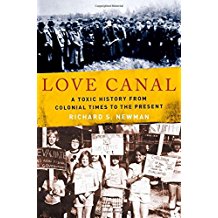 In the 1890s promoter William T. Love wanted to build a planned city near Niagara Falls. To provide power for the town’s industry, he began a 15 foot deep canal to divert water from the Niagara River to the town site. His project failed, and he was able to complete only about one mile of the canal. Twenty years later the kaleidoscope of history had turned and the region had become industrialized. Hooker Chemical Company played a dominant role. In the 1940s it needed additional space to dispose chemical waste and purchased the old canal area. Quite legally, armed with a permit from the City of Niagara Falls, the chemical company began dumping toxic waste in 55 gallon drums in the old canal. In another 20 years the kaleidoscope turned once again, and a large increase of population brought pressures for housing. Hooker gave the dump site, now attractively covered with grass, to the City of Niagara Falls, which built a school and then sold the remainder of the land to developers to build
In the 1890s promoter William T. Love wanted to build a planned city near Niagara Falls. To provide power for the town’s industry, he began a 15 foot deep canal to divert water from the Niagara River to the town site. His project failed, and he was able to complete only about one mile of the canal. Twenty years later the kaleidoscope of history had turned and the region had become industrialized. Hooker Chemical Company played a dominant role. In the 1940s it needed additional space to dispose chemical waste and purchased the old canal area. Quite legally, armed with a permit from the City of Niagara Falls, the chemical company began dumping toxic waste in 55 gallon drums in the old canal. In another 20 years the kaleidoscope turned once again, and a large increase of population brought pressures for housing. Hooker gave the dump site, now attractively covered with grass, to the City of Niagara Falls, which built a school and then sold the remainder of the land to developers to build 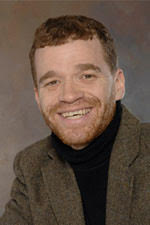 affordable single-family houses.
affordable single-family houses.
The toxic chemicals leaked out and by the late 1960s began causing significant illness and some death. By 1968 the residents of the community, especially housewives concerned about their own families, arouse in anger, demonstrated, petitioned, involved the media, to an extent never seen before concerning environmental issues. Their movement rolled like waves in the ocean, gaining in swell only to become calmed by government appeasement, then rising up once more. It garnered national attention. Ultimately the government bought out and resettled thousands of residents.
The Love Canal crisis generated profound ramifications. It fathered the national Superfund. More importantly it provided a model for local activists throughout the country. The Love Canal activists did not fold their tents and fade away following the resolution of their own problem. They remained active by advising and counseling countless others who suffered their own environmental problems. Especially active in this later work was Lois Gibbs, the housewife-turned-activist who vigilantly spearheaded the Love Canal Homeowners Association. Her vigilance in buttonholing officials was such that the Governor of New York remarked at the height of the protests that, with the exception of his wife, he saw Lois Gibbs more often than any other individual. In 1981, years after the Love Canal crisis had passed, Gibbs founded the Citizens’ Clearinghouse for Hazardous Wastes, a one-stop shopping center for local reformers. That organization has now morphed into the Center for Health, Environment & Justice, an organization with a broader agenda.
The book is a pleasure to read. Clearly written, it covers more than the Love Canal crisis itself, and contains a generous helping of the history of early European activity in the region, then the building of the canal, the Hooker Chemical era, and the subsequent residential development and chemical leachate that generated the crisis. It also pays attention to the personalities involved as well as the cultural norms that surrounded the building of the canal and the dumping of the chemicals. A thorough study. – DJL, Sr.
– – – – –
The finalist status for the 2015-2016 Malott Prize for Recording Community Activism goes to Out in the Rural: A Mississippi Health Center and Its War on Poverty, by Thomas J. Ward, Jr. (Oxford University Press, 2016).
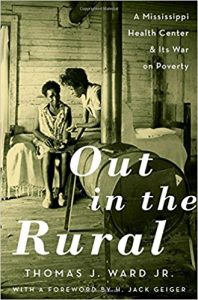 This work discusses the origins, operations, and present status of a significant Great Society initiative of the 1960s: the Tufts-Delta Health Center in Mound Bayou, Mississippi. This clinic opened in the fall of 1967, and suffered significant contraction in the mid-1970s when funds were cut back for most of President Johnson’s War on Poverty programs, but the health center survives today in a smaller but stronger form.
This work discusses the origins, operations, and present status of a significant Great Society initiative of the 1960s: the Tufts-Delta Health Center in Mound Bayou, Mississippi. This clinic opened in the fall of 1967, and suffered significant contraction in the mid-1970s when funds were cut back for most of President Johnson’s War on Poverty programs, but the health center survives today in a smaller but stronger form.
The health center provided a broad but usual spectrum of preventative care, illness management, and maternal care. It also had an unusually broad vision of “health,” and operated such additional programs as a farm project to assure nutritional food, a construction project to repair its patients’ shacks, and a bus service to bring patients to the clinic. For a time, it even operated an educational program to prepare residents to take the high school equivalency exam (GEDs) and an additional program to provide high school students with work-study classes. The clinic persuaded a nearby junior college to teach college-credited courses at the health center.
It would be difficult enough for the leadership of the clinic to face the normal challenges of beginning 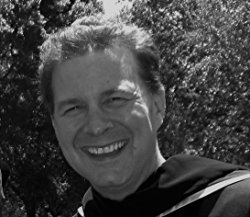 such an ambitious program. Yet Dr. Jack Geiger, the mainstay of the enterprise, and his colleagues faced the additional challenge of local opposition, and not only among the white Mississippians who thought the health clinic was but a cover for civil rights activities. The black elite of Mound Bayou, an unusual black-run community, also opposed the new health clinic. Local black physicians and black owners of the two local black hospitals feared economic loss.
such an ambitious program. Yet Dr. Jack Geiger, the mainstay of the enterprise, and his colleagues faced the additional challenge of local opposition, and not only among the white Mississippians who thought the health clinic was but a cover for civil rights activities. The black elite of Mound Bayou, an unusual black-run community, also opposed the new health clinic. Local black physicians and black owners of the two local black hospitals feared economic loss.
Reading this well-written and readable book leaves somewhat of a bittersweet taste. It was a noble task to build up all these far-flung programs to aid the rural and poor Mississippians. Yet the administrative strife and economic collapse that brought about considerable contraction in the 1970s is also disheartening. It is an interesting read. – DJL, Sr.
The Langum Foundation Is Pleased to Announce the Winners of the Malott Prize for Recording Community Activism for 2013-2014
The bi-annual Malott Prize is awarded to the best book, article, or film that depicts an individual or small group of people striving to make a significant improvement or prevent a significant harm to their local community.
The winner of the 2013-2014 prize is Will Harlan for his book Untamed: The Wildest Woman in America and the Fight for Cumberland Island (New York: Grove Press, 2014). This engaging biography of Carol Ruckdeschel vividly describes her fight to save the Georgia island on which she lives from development and its sea turtles from extinction. This has not been a polite society lady’s conflict, but a passionate down-in-the-dirt confrontation with the powers that be, conducted over a long span of years. Untamed combines a topic of considerable interest with vibrant writing. – DJL, Sr.
Honorable mention for 2013-2014 goes to Marta Gutman for her A City for Children: Women, Architecture, and the Charitable Landscapes of Oakland, 1850-1950 (Chicago: University of Chicago Press, 2014). A combination of women’s strong wills and sense of civic spirit led many Oakland, California women and women’s groups to play a dominant role in the founding and shaping of charitable institutions designed to aid children. This sophisticated academic work provides nuanced and innovative study of an intersection between charity and gender at the end of the nineteenth and beginning of the twentieth centuries. – DJL, Sr.
The Langum Foundation Is Pleased to Announce the Winners of the Malott Prize for Recording Community Activism for 2011-2012
The bi-annual Malott Prize is awarded to the best book, article, or film that depicts an individual or small group of people striving to make a significant improvement or prevent a significant harm in their local community. For the years 2011-2012 two works commanded our attention, and it was very difficult to compare the qualities of their depictions of community since one is a book and the other a film. After agonizing for several weeks, we ultimately determined to award the prize to both.
One winner of the Malott Prize for 2011-2012 is Jay Erskine Leutze for his Stand Up that Mountain: The Battle to Save One Small Community in the Wilderness Along the Appalachian Trail (New York: Scribner, 2012). Belview Mountain in the North Carolina Appalachians was threatened by a developer’s desire to gash and level a large portion of the mountain to extract granite to be made into gravel. A small group of local people, worried about the stability of their homes from blasting and the impact of the development on their water and way of life, entreated the author, a non-practicing lawyer, to spearhead the opposition to the development, for which a permit had already been issued. Leutze took the lead initially, but wisely later hired seasoned lawyers with political connections to take over the struggle.
Leutze clearly and engagingly describes all the levels of bureaucratic and courtroom struggle his little band went through, but it would be wrong to think of this book as a mere summary of legal fortitude. He spends equal attention to the persons and personalities of the mountain folk who are struggling to save their homes and community and writes of them and their culture with a sympathetic and light touch. The discovery that the eyesore to be created by the development would be clearly visible from the Appalachian Trail significantly aided the equities of their cause.
Adele Malott was convinced, as she wrote herself, that “at democracy’s heart are people who find themselves agitating for change to make things better, repair something that has broken down or create new solutions for old problems. Such changes do not come easily. Nor without pain.” She was fascinated by the motivations of quite ordinary people who “found themselves in circumstances that pulled them out of the crowd and caused them to speak up,” even as neighbors judged them busybodies and politicians judged them troublemakers.
She wanted the prize-winning accounts to focus on activists, even more than their causes, to show us “what pushed him/her to get off the coach and spend hours at countless meetings trying to be heard, trying to persuade people to help pick up the load and move toward a solution. We should be seeing things through this activist’s eyes.” And in Stand Up that Mountain we do see this in a first-hand account by the primary activist himself, through all the twists and turns of tactics, hearings, and personalities, but written with a light-handed entertaining touch.
Other winners of the Malott Prize for 2011-2012 are Steve James and Alex Kotlowitz, the makers of The Interrupters (Kartemquin Films, 2011), a film that tells the story of CeaseFire, now re-named Cure Violence, a private non-profit organization that seeks to minimize street violence in the toughest neighborhoods of large urban communities. Cure Violence regards violence as an infectious disease, and with that premise it (1) detects and interrupts outbreaks of the disease, i.e., shootings and other fights; (2) determines what individuals are at risk for perpetrating violence, e.g., recent releases from prison, and attempts to modify thinking and behavior to reduce the probabilities of violence; and (3) tries to change underlying social and behavioral norms on the community level.
To accomplish these objects Cure Violence recruits young men and women to intervene in situations that might create violence and persuade those involved of the futility of that course of conduct. They also work with persons with very high risk, teenagers recently ejected from schools or homes or released from prison or whose sibling has recently been killed in street violence, trying to alleviate the poverty, alienation, or anger that might lead to violence. Cure Violence, tries to recruit its Interrupters from among young people who themselves have past histories of addiction, violence, and prison to increase their street credibility among those they serve.
The film The Interrupters spends some but little time with the philosophical premises of the organization, and instead focuses on three specific interrupters, a Black Muslim woman, and two men, one black and other Hispanic, and their work in Chicago neighborhoods. The strength of the film is that the viewer is shown detail about these very personable protagonists. We meet their families, and learn of their own backgrounds and what it was that turned their lives from violence. Then we see their actual work with disaffected youth who seem primed for shooting someone or other anti-social activity. We see many successes and a few failures. But the interrupters themselves stay upbeat and focused on their work. The viewer wants very much for them to succeed.
The Langum Foundation Is Pleased to Announce the Winners of the Malott Prize for Recording Community Activism for 2009-2010
The Langum Foundation is pleased to announce that the winner of the Gene E. and Adele R. Malott Prize for Recording Community Activism for 2009-2010 is Tapped, a documentary film available on DVD. This beautifully-made film, directed by Stephanie Soechtig of Atlas Films, develops a disturbing theme of deep irony through stunning visuals and interviews with community activists.
We well might think that there could hardly be a product more benign than bottled water. Or that no more healthful refreshment could be possible than the sparkling water shown on the bottles and industry advertising. But we see through Tapped that this commonplace thinking is naïve. Ironically this product, so seemingly healthful and benign, has significant adverse consequences.
Bottled water has an adverse impact on public health through the impact of certain chemicals used in the manufacture of plastic bottles. Bottled water also has an adverse impact on the environment because of the nearly indestructible plastic bottles containing the product, casually discarded by consumers. Finally, bottled water has an adverse impact on local communities and their citizens by the massive plunder of small lakes and streams by corporate giants to obtain the public water that they then sell.
This film will make one think twice before reaching in the refrigerator for another bottle of water. – DJL, Sr.
The Langum Foundation Is Pleased to Announce the Winners of the Malott Prize for Recording Community Activism for 2007-2008
The Langum Foundation announces the first winner of the newly created and unique Malott Prize for Recording Community Activism.
Bruce Barcott, The Last Flight of the Scarlet Macaw: One Woman’s Fight to Save the World’s Most Beautiful Bird (New York: Random House, 2008).
Bruce Barcott has managed to write an environmental thriller, well, certainly a page-turner. His book is a highly-readable account of a crusade to block a dam over the Macal River in the west of the Central American country of Belize. The backwaters created would destroy the habitat of that country’s Scarlet Macaws.
Barcott writes tightly and takes the reader with clarity and suspense through the minutia of the environment factors, construction details, political fights, and legal battles that move from the Belize courts all the way to the Privy Council in London. His task of building an interesting book was made easier by the rich stew of factions and factors engaged in the struggle. On one side is Sharon Matola, a somewhat quirky American expatriate living in Belize, head of the privately-run Belize Zoo, and the protagonist in a long, tiring crusade to block construction of the dam. Opposing her are corrupt Belizean officials who attempted to stop her efforts by threatening to put a national dump next to her zoo, and, after that threat was blocked, painted her as an outsider, an environmental imperialist, a tool for former white masters who would deprive the black man of his own country’s electric power. Lurking in the background are incompetent scientists and also corrupted scientists silenced by lucrative consultation contracts, avaricious private power companies, eager construction companies, and a largely uninformed and apathetic public.
Barcott moves the reader with clarity, step-by-step through years of public opinion struggles, political wrangles, and legal maneuvers. He builds suspense by not revealing the denouement, the outcome, until the very end. I think, in that regard, that I will follow his lead.
This book is a good read. The Langum Foundation is proud to designate it as the first winner of the Gene E. and Renee R. Malott Prize for Recording Community Activism, for the years 2007-2008. DJL, Sr.
Please see publicist’s release at http://bookbuzz.com/langumtrust.htm.



